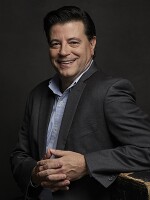Since 1990, a federal law has been on the books that requires museums to return human remains and other culturally important objects in their collection to their original owners. Waterbury’s Mattatuck Museum complied with the Native American Graves Protection and Repatriation Act, or NAGPRA, this week when it repatriated a ceremonial rattle to the Seneca-Cayuga Nation of Oklahoma.
The rattle is made from the shell of an alligator snapping turtle, an animal that plays an important part in the Seneca-Cayuga’s creation story.
“This is a very abbreviated version of one story, but when the alligator snapping turtle gets tired of being in one spot, he’ll stretch,” said William Tarrant, a member of the Seneca-Cayuga Nation of Oklahoma. “And that’s what causes earthquakes. They talk about the different plates on the turtle’s shell. Thousands of years later, scientists found out about plate tectonics.”
It's unclear how the Mattatuck Museum obtained the object. Officials do know that it came into their possession in 1967. During a recent inventory of the Mattatuck’s collection, they rediscovered the rattle and quickly determined that it belonged to the Seneca-Cayuga Nation of Oklahoma. Tarrant saw the writing on the rattle and knew it once belonged to a tribe healer. But how did it end up in Connecticut?
“Sometimes items were stolen, sometimes they were sold,” Tarrant said. “Elders looked down on the selling of items, but what would you have done to feed your children? You might have sold something that is very important to you.”
Tarrant said the rattle is culturally significant to his community, and he is thrilled to have it back.
“It’s a healing thing. Bringing it back definitely strengthens our connection to our ancestors.”
The Mattatuck’s chief curator, Keffie Feldman, said the repatriation is a step forward in reversing museum practices of the past that harmed indigenous communities.
“This really does feel like an opportunity, in our own small way, to undo some of those past hurts,” said Feldman.
The Mattatuck Museum says it is repatriating other Native American objects in its collection.





